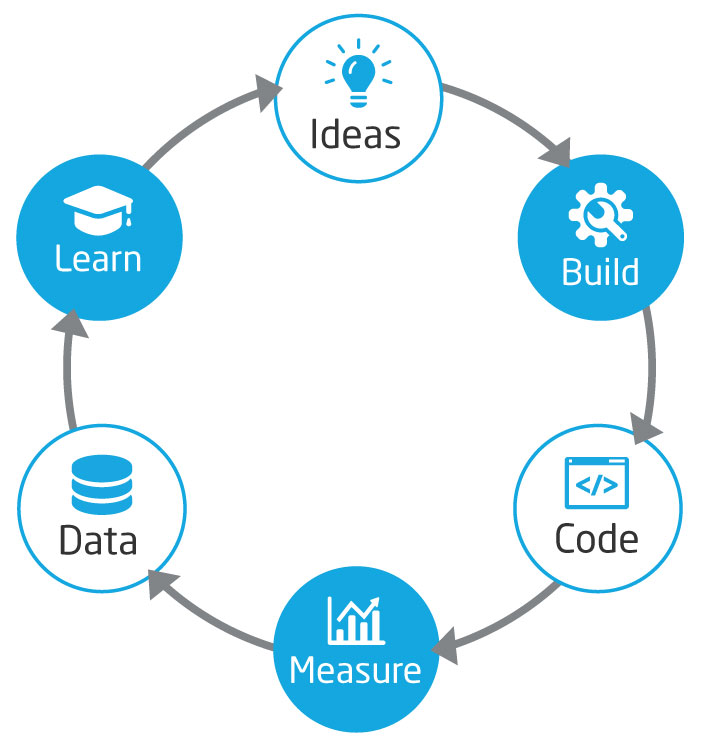
Lean Startup
Lean Startup is an agile methodology that focuses on successfully bringing product ideas to life. The main elements of the approach are an interactive product launch, very short development iterations and as the most important element, customers’ feedback.
What is Lean Startup?
Let’s start with a quotation “Simplicity is the ultimate in sophistication” (Leonardo Da Vinci). This simply means, that there are no bells and whistles, that something is reduced to the minimum, that something is lean! Focusing on the core idea of a product or the core processes of a company/startup is not as easy as it might seem at first sight. Lean Startup can help you concentrating on the core aspects of your product idea and your organization. By doing so it enables you to launch your product at the market ASAP.
The center of the Lean Startup methodology is the concept to get customer feedback on the original product idea as quick as possible. To achieve this it is necessary to bring the product to the market quickly. In order to achieve this it can be necessary to think outside the box. Zappos, an online shoe store is a great example. The founder wanted to test his hypothesis that customers were now ready to buy shoes online rather than in traditional shoe stores. He didn’t test this by setting up a website with all the necessary infrastructure and shoe depot. No, he approached local shoe stores, took pictures of their inventory, posted the pictures online, bought the shoes from the stores at full price, and sold them directly to customers if they purchased the shoe through his website. The result was that customer demand was present, and Zappos would eventually grow into a billion dollar business based on the model of selling shoes online.
As you can see the founder of Zappos concentrated on the core aspect of his idea: selling shoes in a web store. He managed to get a proof of concept for his idea without setting up a large business.
The concept of Lean Startup was shaped in 2008 by Eric Ries and his book “The Lean Startup: How Today’s Entrepreneurs Use Continious Innovation to Create Radically Successful Businesses”. Ever since then the Lean Startup community grows and there are meetup groups, conferences and online communities.
Methodology and Principles
The approach really deserves to be called lean, because Lean Startup tries on the one hand to eliminate wasteful practices and on the other hand to increase value-producing practices. This way less funding and man power are required to get the idea to the market. However, lean isn’t just about spending less money or failing fast. It is about putting a process, a methodology around the development of a product. This target can be achieved by following these principles:
- Eliminate uncertainty
- Work smarter, not harder
- Develop an minimum viable product (MVP)
- Validate learning
By seeking feedback and using short development iterations for the product it is tried to improve the chance of success. Depending on the product and the target group it is necessary to set up the organization and to find a way to get feedback. In general, the methodology can be used for all different kinds of products - from software over consumer goods to services.
The Lean Startup process targets on minimizing the required time for one iteration of the process. That means, that ideas can be build into code quickly in oder to measure data which allows you to learn and to adjust your idea.
Tools
The implementation of the methodology and its principles requires the right tools and procedures. It is important that the entrepreneur can focus on his or her idea and the development instead of spending time on administration and installation. The tools and technology necessary for that can widely vary and should be chosen carefully.
Conclusion
If you have an idea for a product and you want to promote it you need to find your way of doing so. By following the Lean Startup methodology you learn to focus on the unique characteristics of your product. By using a MVP you get feedback on your idea very early and you have the opportunity to make adjustments. Of course there are also risks in releasing early versions like competitors that could copy your idea and overtake you, because they might have more resources. Despite that you need to release your idea at some point, you just have to figure out when the best time is.





